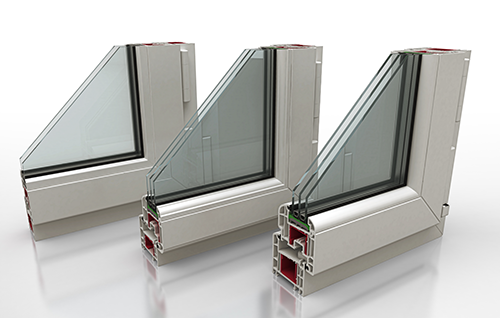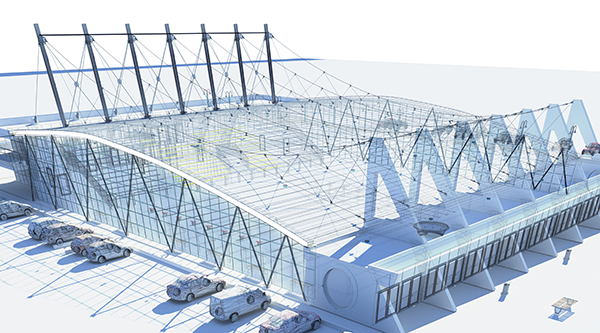
Published June 24, 2024 by John Vondrak
Tags: Ansys Archicad Catia Lumion Maya Revit Sketchup Solidworks AI, Deep Learning & Machine Learning Adobe Creative Cloud
BOXX AI for Your Industry: Augmentation
With the introduction of BOXX AI, and as AI implementation extends across all industries, it’s important to understand how it directly impacts and provides genuine advantages to your creative business. BOXX has a storied 28-year history providing hardware solutions to media & entertainment (M&E), manufacturing and product design (MPD) and architecture, engineering & construction (AEC), so let’s begin there.
For a clearer understanding, we’ll relegate this blog to a discussion of AI augmentation, i.e., the AI features incorporated into your creative applications, or the available AI add-ons that enhance those applications. To learn about the benefits of AI development (actual AI training and inference computing for model development), read the companion blog: “BOXX AI for Your Industry: Development.”
Media & Entertainment
Competition requires M&E companies to optimize and accelerate production pipelines, and a key component in expediting the creative process is augmented AI. BOXX workstations, powered by NVIDIA RTX GPUs, provide compute performance essential to optimize AI augmentation found in visual effects, animation, and film editing applications, ultimately accelerating production pipelines to satisfy critical deadlines.
- Content Creation: Applications like Adobe Creative Cloud and Maya improve workflow efficiency and inspire creativity through rapid AI-generated high-quality text, images, video, and animation content. Generative AI can bring concept drawings to life, create fully animated sequences, and quickly edit objects, backgrounds/foregrounds, or upscale content in real -time. Autodesk AI, for example, allows you to automatically control scenes in Maya using natural language text prompts for tasks like copying an object or increasing its size.
- AI Translation & Transcription: Increase accessibility and expand global reach with quickly localized and cost- effective content through AI translation and closed-captioning—even for live events.
 Autonomous Intelligent Avatars: Using pretrained LLMs, generative AI can develop autonomous, intelligent avatars. Speech AI improves user engagement with avatars interactively leveraging technologies, and animation AI (based on video/audio input) can bring avatars to life with realistic 2D and 3D character animation.
Autonomous Intelligent Avatars: Using pretrained LLMs, generative AI can develop autonomous, intelligent avatars. Speech AI improves user engagement with avatars interactively leveraging technologies, and animation AI (based on video/audio input) can bring avatars to life with realistic 2D and 3D character animation.
Manufacturing and Product Design
Product development has become increasingly complex as MPD workflows evolve to keep pace with competition, customer expectations, materials, increased regulations, and sustainability initiatives. Firms rely on their MPD application’s AI augmentation for generative design, rapid simulations, virtual environments, and digital twins. BOXX workstations equipped with NVIDIA RTX GPUs accelerate design and simulation processes by optimizing the latest AI features found in applications like SOLIDWORKS, CATIA, Ansys, and PTC Creo.

- AI for Product Design: AI has the potential to revolutionize traditional design processes, transforming 2D sketches into 3D NURBS (non-uniform rational B-splines) models, expediting design iterations. This innovation allows access to visual datasets for generative design, reducing design timelines. Ansys SimAI, for example, offers greater accessibility, enabling rapid testing of design alternatives.
- Digital Engineering: Generative AI can be trained on legacy product designs and manufacturing information, along with contemporary scientific literature, providing quick and valuable R&D insights. By analyzing data (text, image, and CAD), generative AI can make suggestions to help broaden design space and quickly reach solutions. It can also identify patterns and trends to inform design optimizations—like PTC Creo AI tools Generative Design Extension (GDX) and Creo Topology Optimization Extension (TOOX).
Architecture, Engineering, and Construction
As advanced technologies like BIM, VR, and virtual construction become widely adopted, BOXX workstations, purpose-built for AEC and powered by NVIDIA RTX GPUs, provide data center-level computing power for AI features in applications like Autodesk Revit, SketchUp, Archicad, and Lumion.

- Design Optimization: Generative AI tools produce optimized designs based upon energy efficiency, structural integrity, daylighting, natural ventilation, and other input parameters, then budget, and cross-reference against industry standards and building codes. Quickly explore multiple design options and promote innovation while balancing budget, aesthetics, sustainability, and structural considerations. For example, Navisworks’ AI-powered clash detection identifies incompatibilities in design and inspects model functionality.
- Physics AI for Predictive Analytics: While generative AI can predict the structural integrity of buildings, bridges, dams, and other infrastructure under varying environmental conditions like earthquakes, floods, and winds, it can also be applied to other simulation and analysis areas including energy efficiency modeling, acoustic simulations, and thermal comfort analysis.
Taking advantage of the latest AI augmentation in your applications will accelerate your workflow, saving time and money and increasing productivity and profit—but only if you are able to optimize those features with a purpose-built workstation or data center platform. Trust the experts at BOXX and stay ahead of the competition. Consult with one of our performance specialists today via online chat or call 877.877.BOXX.
